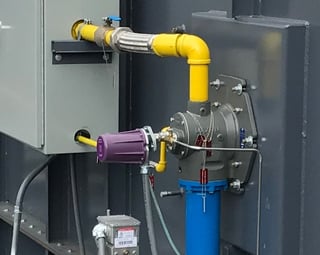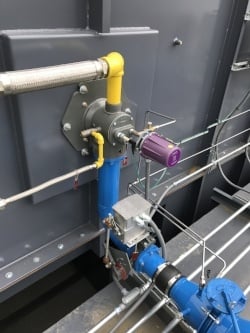Keeping your air pollution control equipment properly maintained is essential for meeting regulatory requirements and efficient operation. Here on the CPI blog, we regularly share tips on maintaining your systems, which requires replacing components on a yearly basis. Today, we're taking a closer look at the importance of replacing Ultraviolet Flame Detectors (UV Scanners).
Please keep in mind that safety is priority when performing any maintenance on any type of machinery. Operating and Maintenance (O&M) manuals contain a section on Cautions and Safety in which several levels of advisory statements are described.

Image Credit: Rick Fienberg, TravelQuest International and Wilderness Travel
On Monday August 21st, 2017, North America will experience a Total Solar Eclipse. This occurs when the Moon completely covers the Sun. This allows the Sun’s tenuous atmosphere – the corona to be seen. In the Chicago area, the moon will block 87% of the Sun.
Warnings are being issued to avoid looking directly at the sun. For many of us you might begin to sing (hopefully just to yourself) “Blinded by the Light” by Manfred Mans’ Earth band, “Mamma always to me not to look into the eye of the sun”. You do need to use some type of filtering device such as UV filtering glasses or an indirect viewing, such as a pin hole box, where you can safely view the progression of the eclipse without the risk of damaging your eyes.
What is a UV Scanner?
A UV Scanner is just one piece in the larger scale of a burner management system (BMS). The UV Scanner detects the ultraviolet radiation emitted by combustion flames. The flame supervision is designed to detect or not to detect a flame. The burner management system makes a decision based on the flame or no flame input from the UV scanner and allows or does not allow fuel flow to feed combustion.

Maintenance
Always refer to the manufacturers operation and maintenance manual for specific details – but here are a few suggestions:
- Clean the viewing windows and sight pipe (if used) when necessary. Remove the detector and use a soft, clean cloth to remove accumulated contaminates from the UV radiation sensor tube glass envelope.
- Cleaning of the site tube that the UV Scanner connects to is also recommended.
- The line of sight is also the cause of many loss of flame faults. Routine observation of the flame signal strength is recommended to determine if the flame signal strength starts to change. Periodic safety checks of the UV scanner not sensing a flame are recommended to verify proper operation of a flame failure which should shutoff the safety shutoff valves and energize or de-energize designed interlocks.
Troubleshooting Tips
These are some common troubleshooting guidelines. Actions and Terminology may vary pending on the problem which exists. Please refer to the component trouble shooting guidelines found inside the manual for additional support.
- Check for the proper voltage
- Check for wiring defects
- Check the ambient temperature of the UV scanner, if too hot, cooling could be required
- Ensure UV Scanner lens and site tube is clean
- For self checking scanners, ensure shutters and shutter drives are working correctly
- Replace UV scanner, as needed
- Replace amplifier, as needed
What spare parts should you have on hand for UV Scanner?
The ultraviolet radiation sensing tubes have a life expectancy of 40,000 hours of continuous use within the flame detectors specified ambient temperature and voltage ratings. However, as you can see in the troubleshooting tips above, there are many factors that can cause failure of your UV Scanner. UV Scanners, depending on the make and model, can have several modular components that could be replaced independently of the complete assembly. It is important to always have both a complete set of spare parts, as well as a complete assembly on hand to quickly replace any component that has failed.
- Amplifier
- Purge card
- Timer
- Relay
- Complete UV Scanner assembly
Here are links to some of our other Maintenance Tips blogs:
CPI would like to thank you for your interest in proper maintenance of your air pollution control device. As always, in times of faulty operation, please feel free to  for trouble shooting and service needs.
for trouble shooting and service needs.








